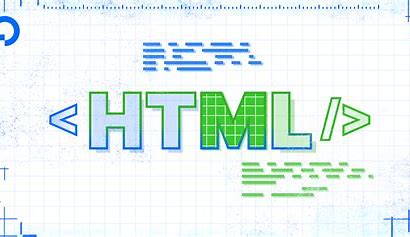Introduction to HTML: The Backbone of Web Development
 Simarjeet Kaur
Simarjeet Kaur
In the world of web development, HTML stands as the foundational language that structures the internet as we know it. HTML, or HyperText Markup Language, is the standard markup language used to create web pages. It forms the backbone of all websites, providing the essential framework that allows text, images, videos, and other elements to be displayed in a web browser.
What is HTML?
HTML is a markup language that uses a series of elements and tags to define the structure and content of a webpage. These elements are the building blocks of web pages, allowing developers to organize and format text, embed images and videos, create links, and form interactive elements such as forms and buttons.
The Basic Structure of an HTML Document
An HTML document is a text file that contains a series of elements enclosed in tags. Each element serves a specific purpose, and the tags tell the browser how to display the content. Here's a simple example of an HTML document:
<!DOCTYPE html>
<html>
<head>
<title>My First HTML Page</title>
</head>
<body>
<h1>Welcome to My Website</h1>
<p>This is a paragraph of text on my first HTML page.</p>
<a href="https://www.example.com">Visit Example</a>
</body>
</html>
<!DOCTYPE html>: Declares the document type and version of HTML.<html>: The root element that wraps all content on the page.<head>: Contains meta-information about the document, such as the title.<title>: Sets the title of the web page, shown in the browser tab.<body>: Contains the actual content of the web page, such as headings, paragraphs, and links.<h1>: A heading element.<p>: A paragraph element.<a>: An anchor element used to create hyperlinks.
Common HTML Elements
Headings (
<h1>to<h6>): Define headings, with<h1>being the highest level and<h6>the lowest.Paragraph (
<p>): Defines a block of text.Links (
<a>): Create hyperlinks to other pages or resources.Images (
<img>): Embed images in a webpage.Lists (
<ul>,<ol>,<li>): Create unordered (bulleted) and ordered (numbered) lists.Tables (
<table>,<tr>,<td>): Organize data into rows and columns.Forms (
<form>,<input>,<textarea>): Collect user input.
The Importance of HTML in Web Development
HTML is crucial because it:
Structures Content: It provides the skeleton of a webpage, organizing content in a readable and accessible manner.
Enables Accessibility: Proper use of HTML ensures that web content is accessible to all users, including those with disabilities.
Supports SEO: Well-structured HTML helps search engines understand the content of a webpage, improving its visibility in search results.
Forms the Basis for CSS and JavaScript: HTML content is styled using CSS (Cascading Style Sheets) and made interactive with JavaScript, two other core web technologies.
Getting Started with HTML
To start creating your own HTML pages, all you need is a text editor (like Notepad or VS Code) and a web browser. Begin by writing the basic structure of an HTML document, then experiment with adding different elements to see how they affect the page.
Conclusion
HTML is the essential language of the web, forming the foundation of all websites. By understanding and mastering HTML, you can create well-structured, accessible, and visually appealing web pages. Whether you're a beginner just starting your web development journey or an experienced developer looking to brush up on the basics, a solid grasp of HTML is indispensable. So, dive in, start coding, and bring your web ideas to life!
Subscribe to my newsletter
Read articles from Simarjeet Kaur directly inside your inbox. Subscribe to the newsletter, and don't miss out.
Written by
